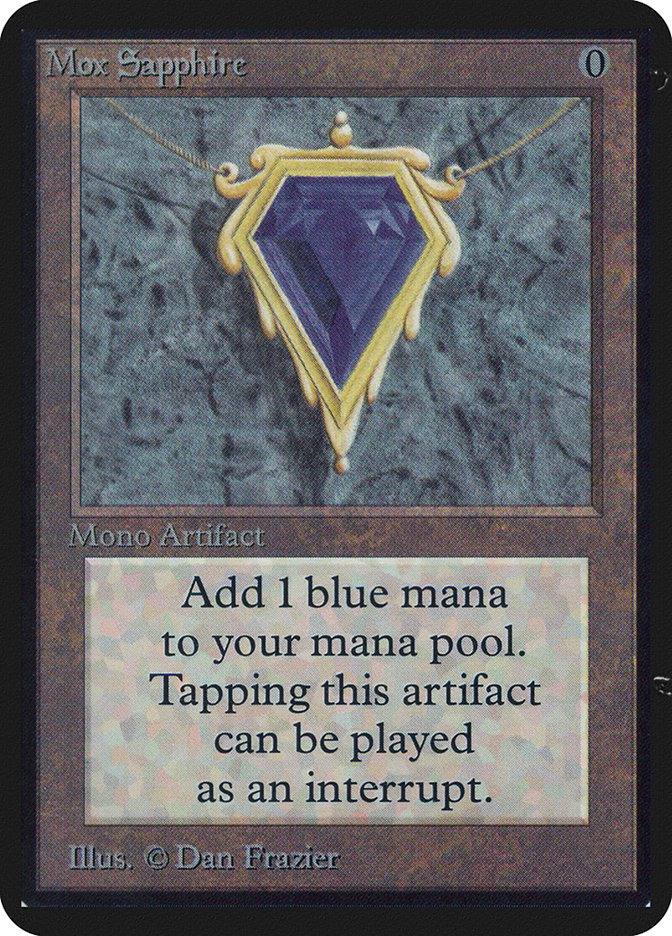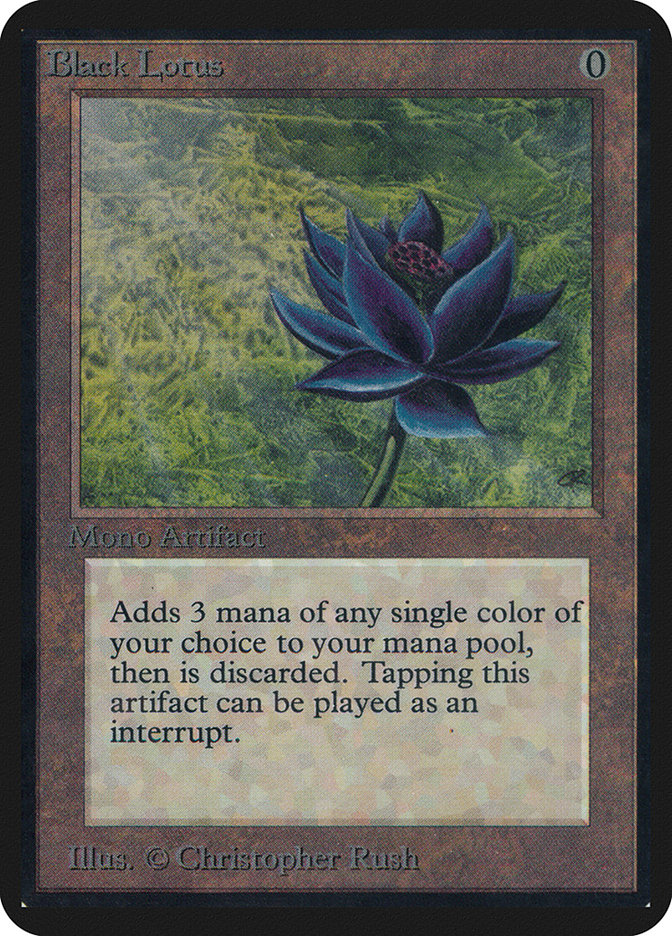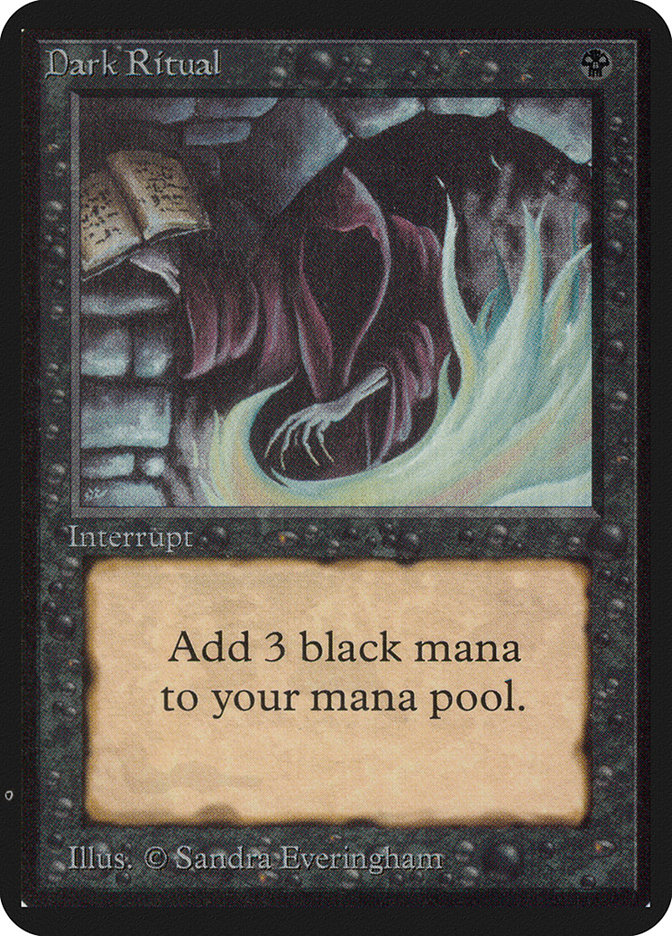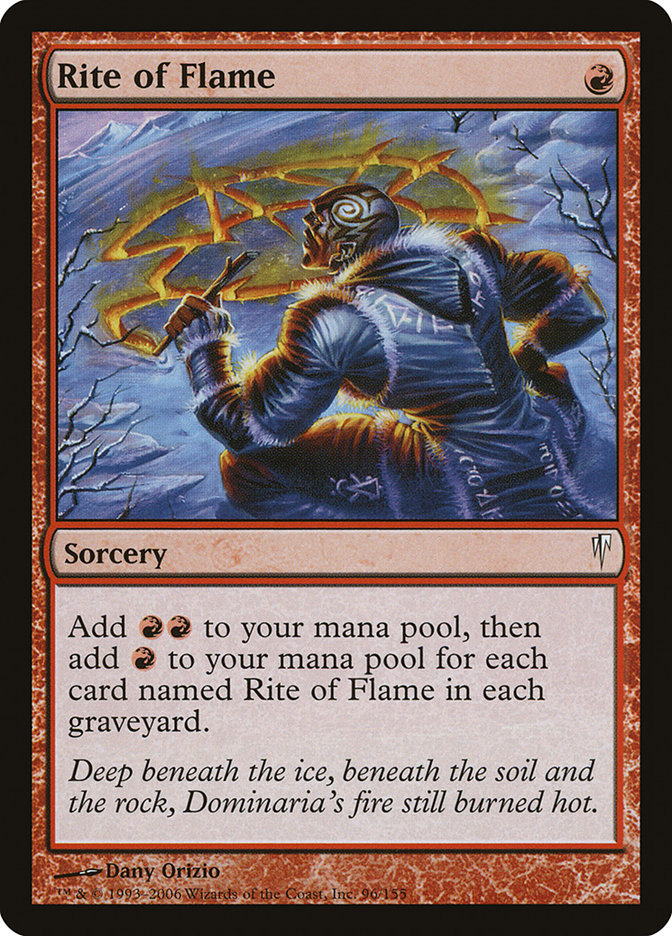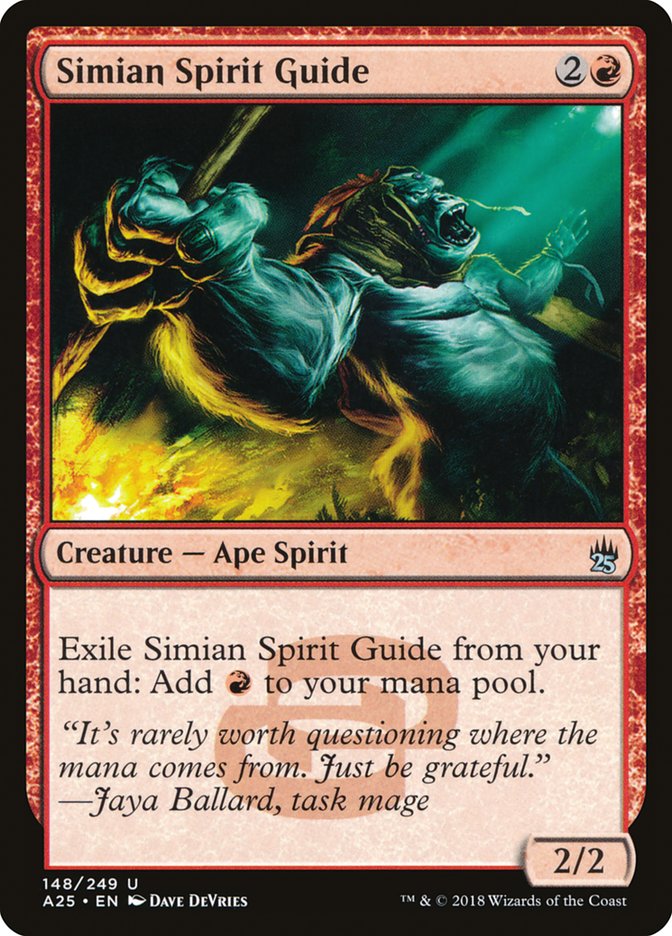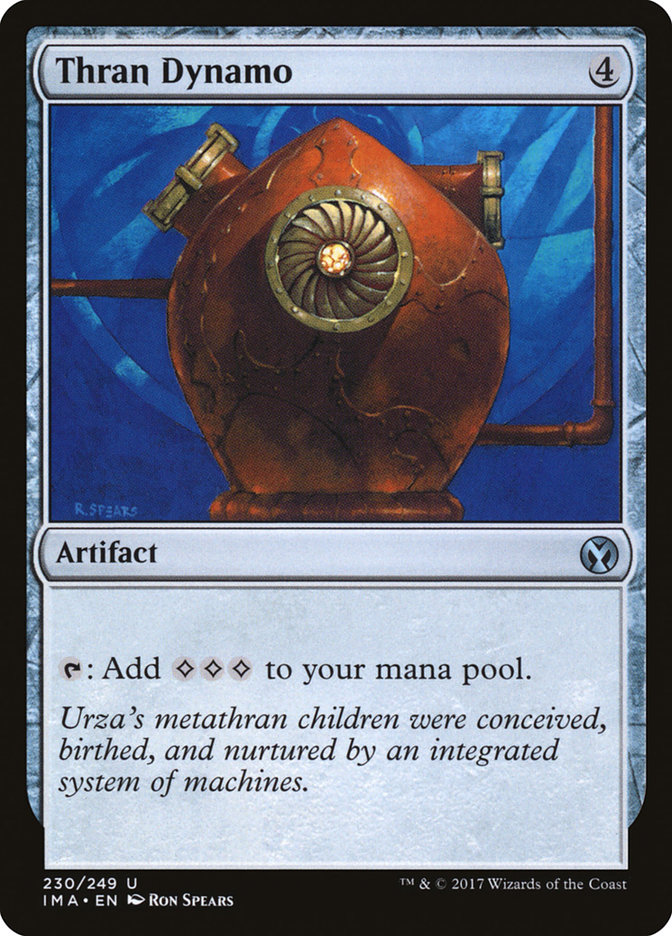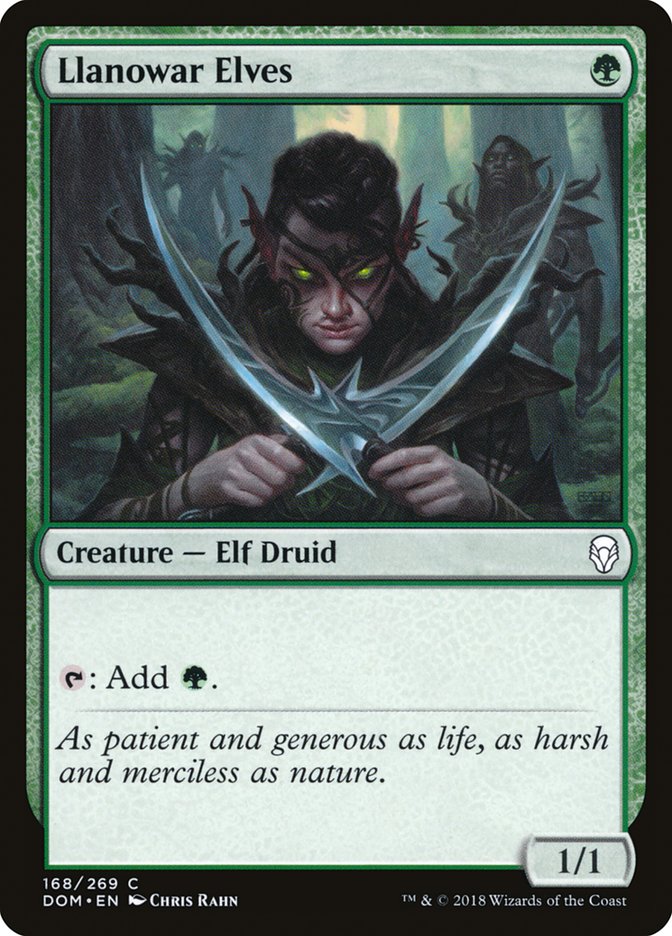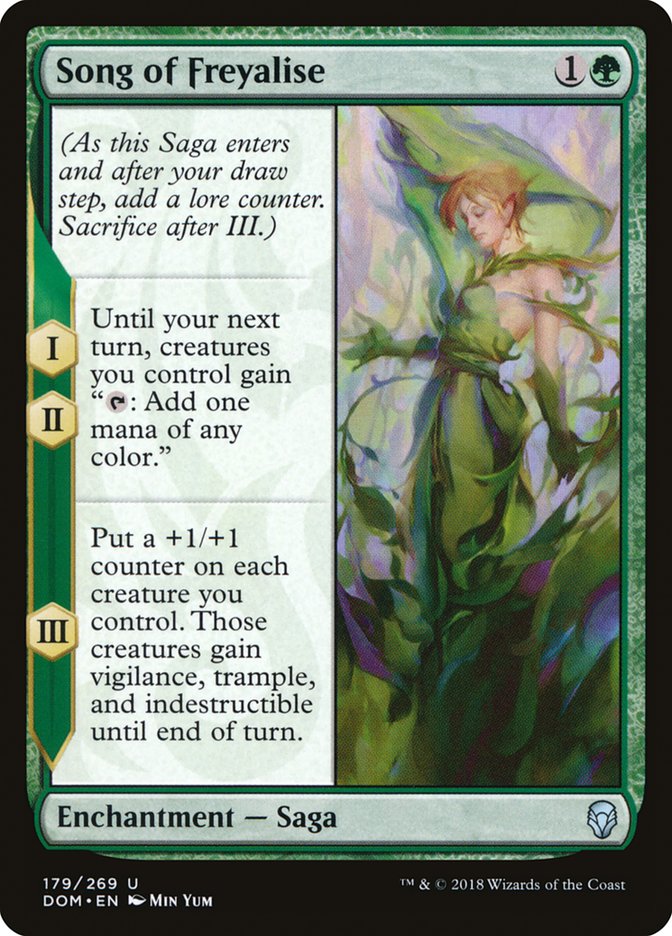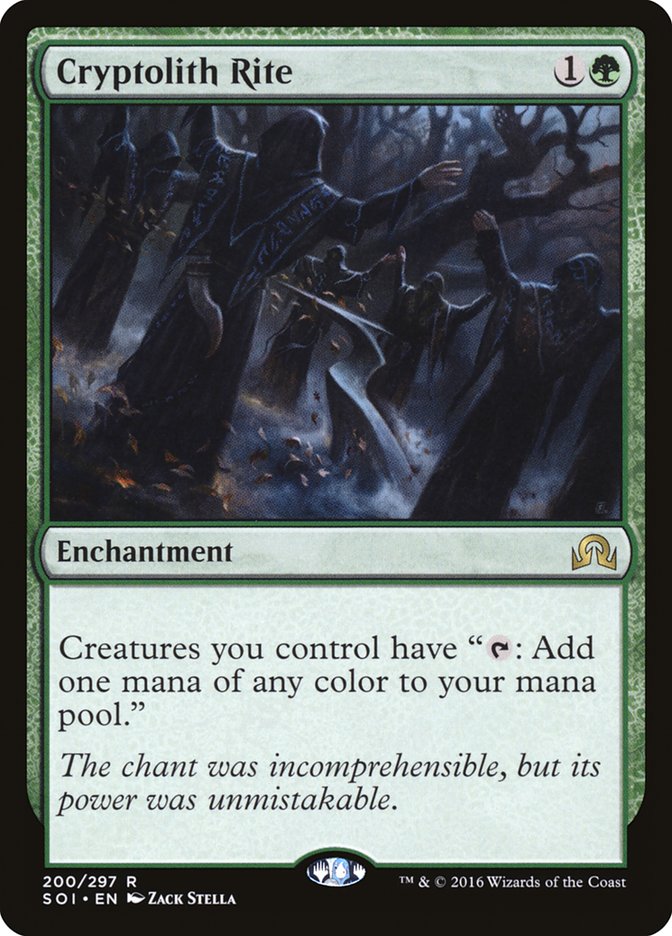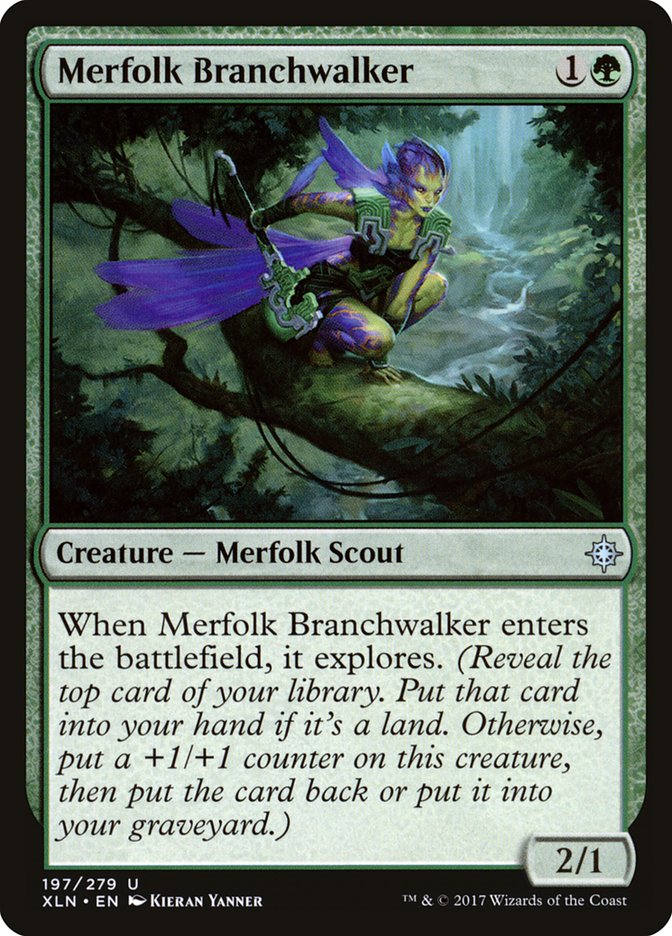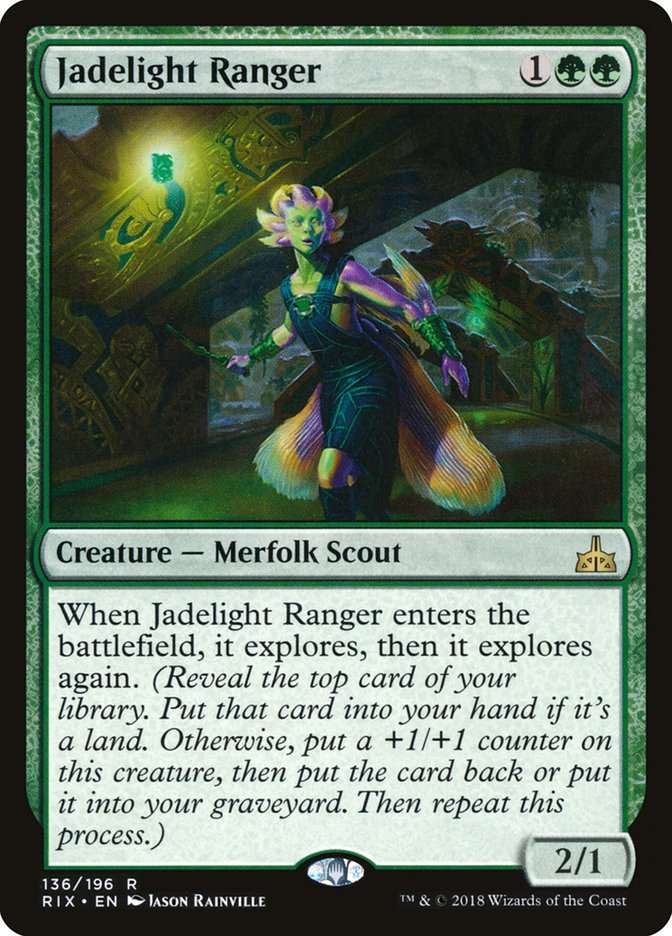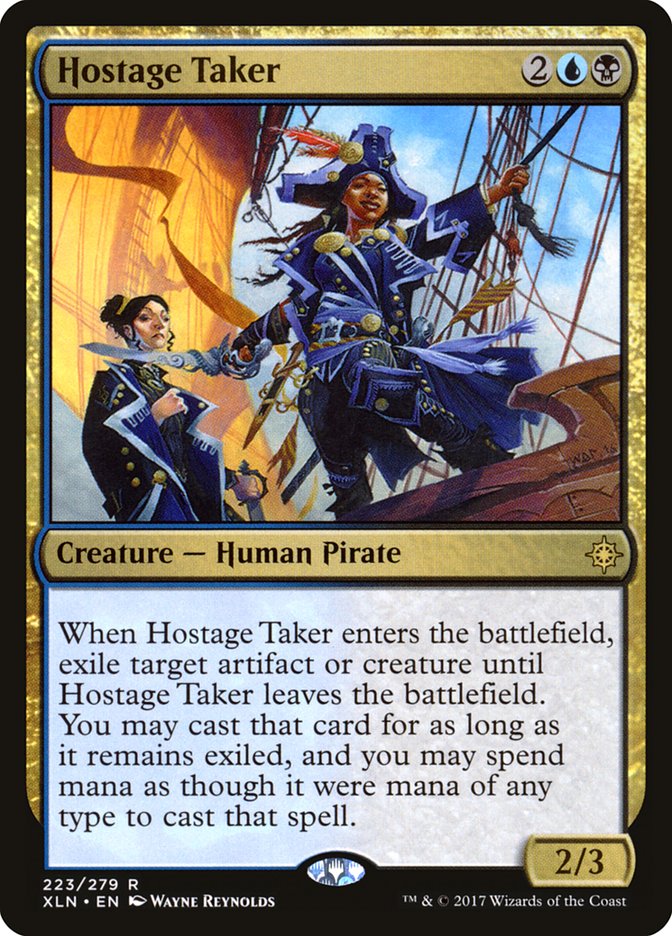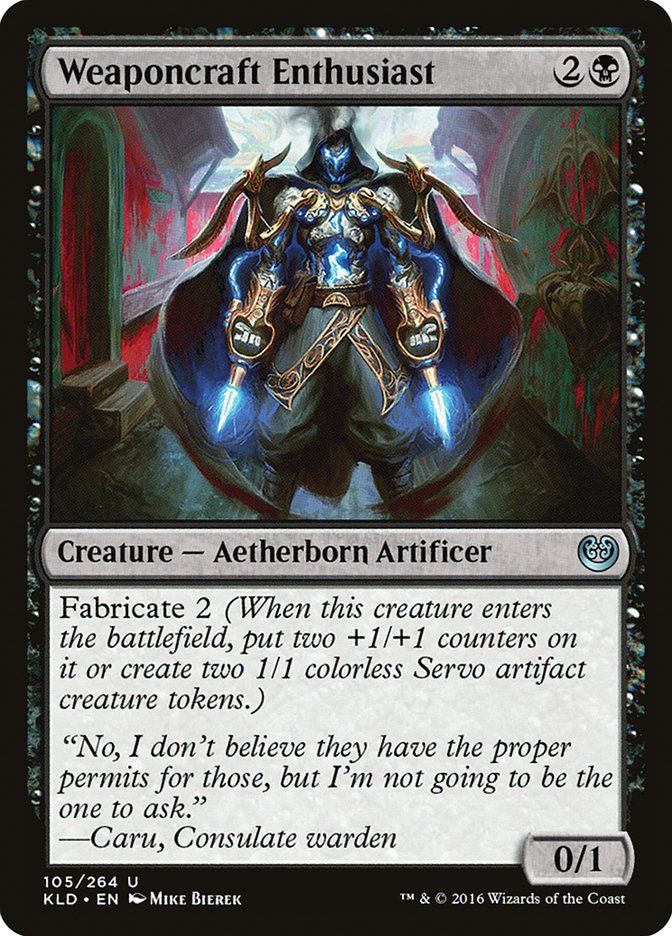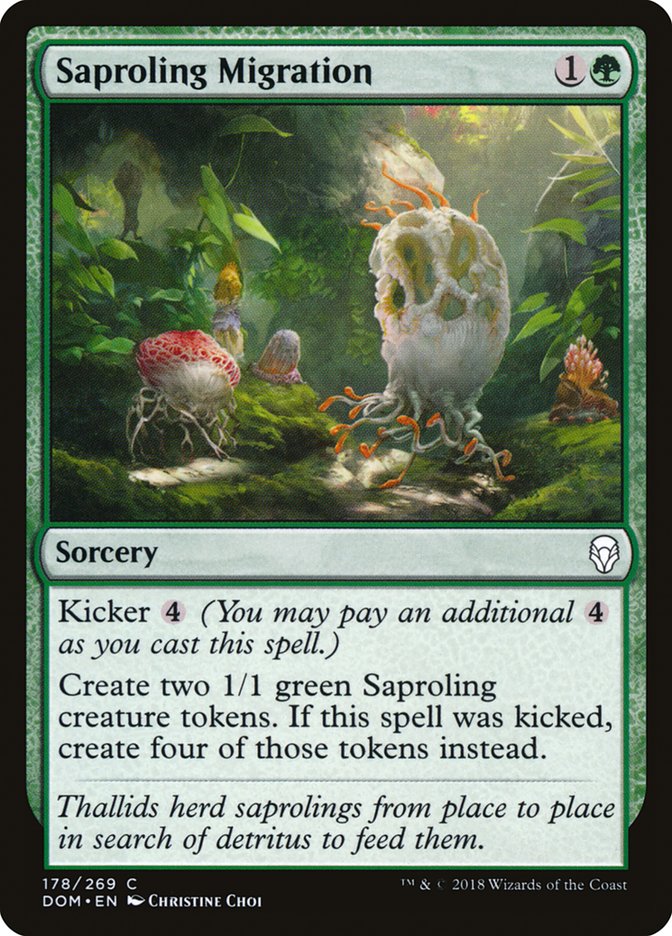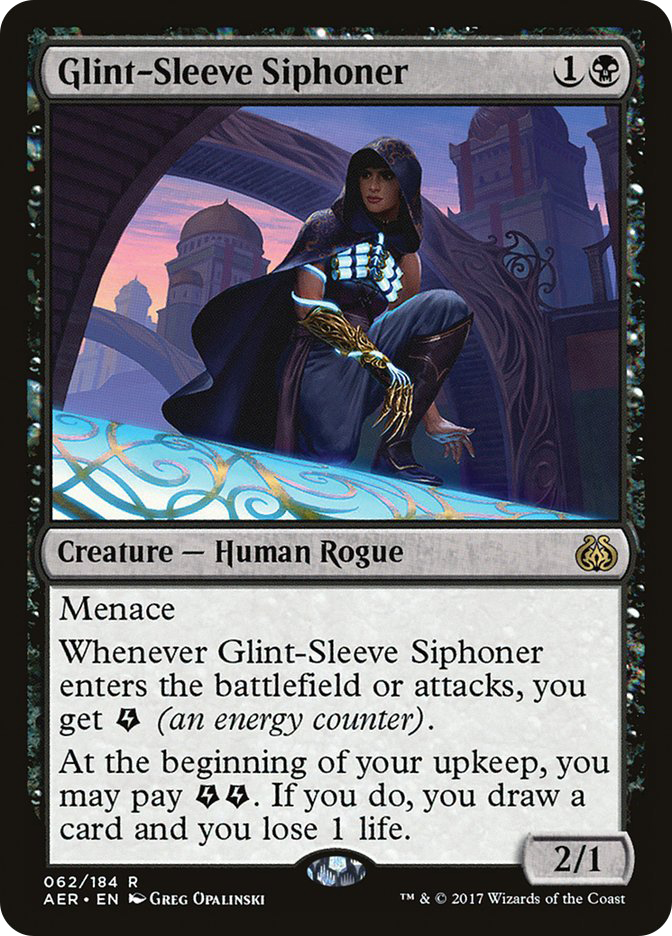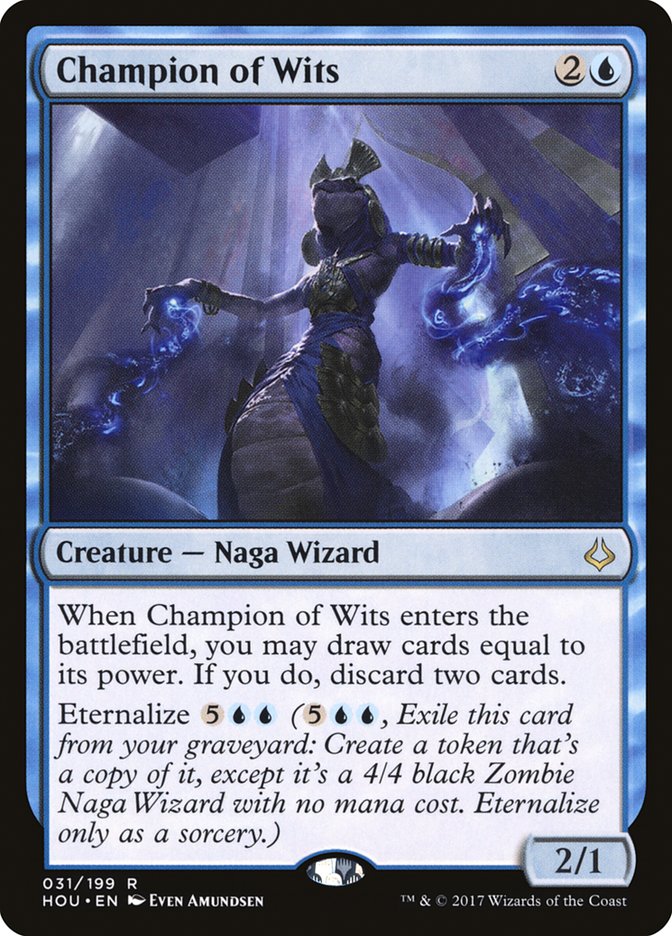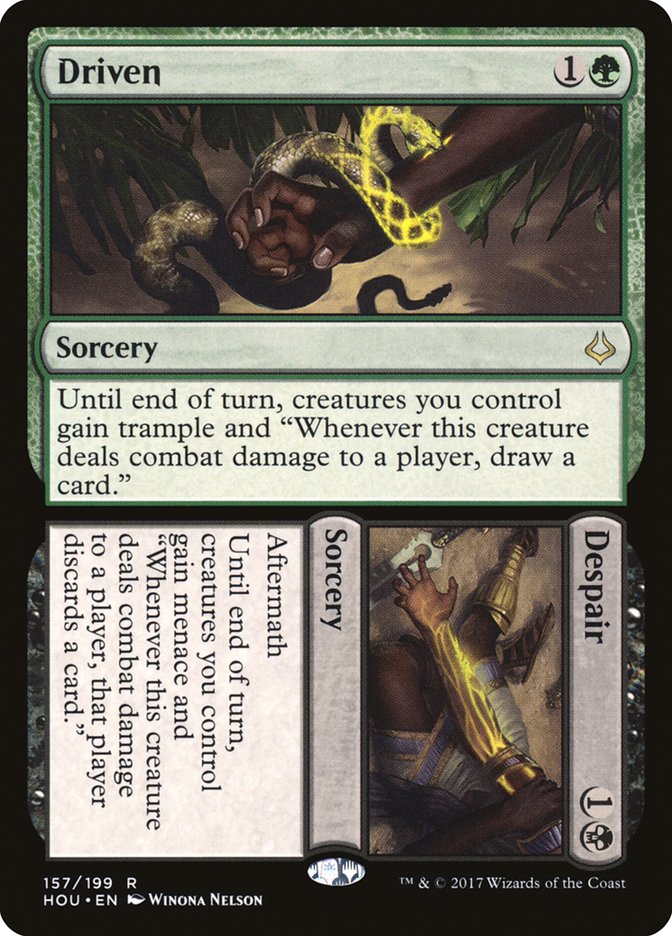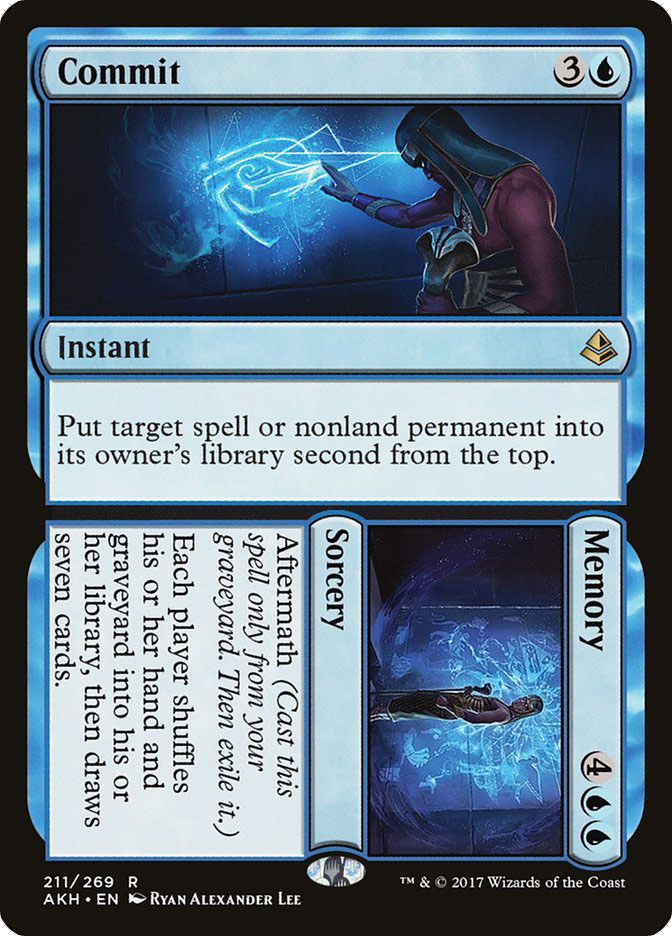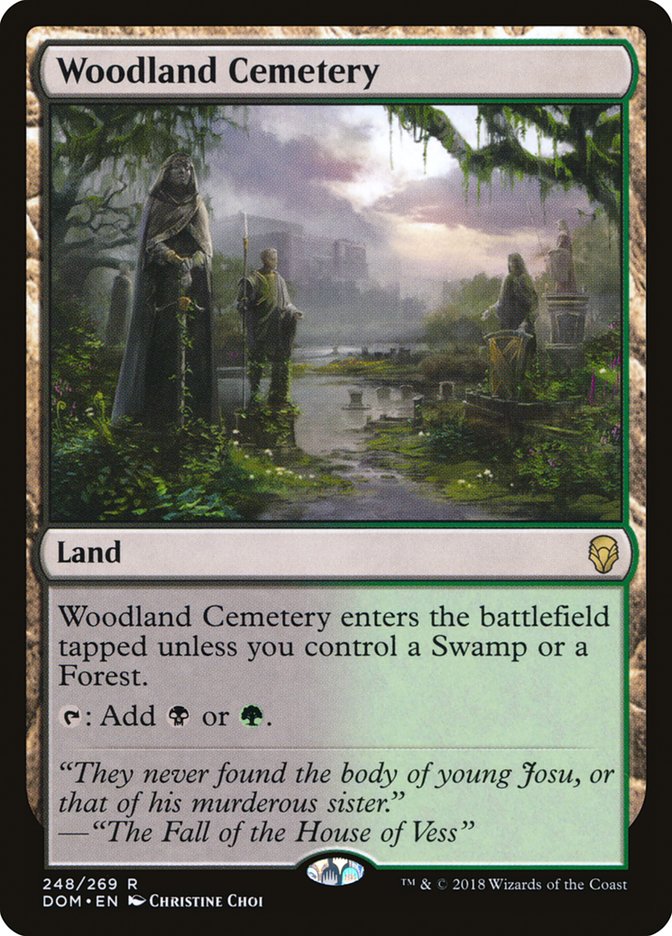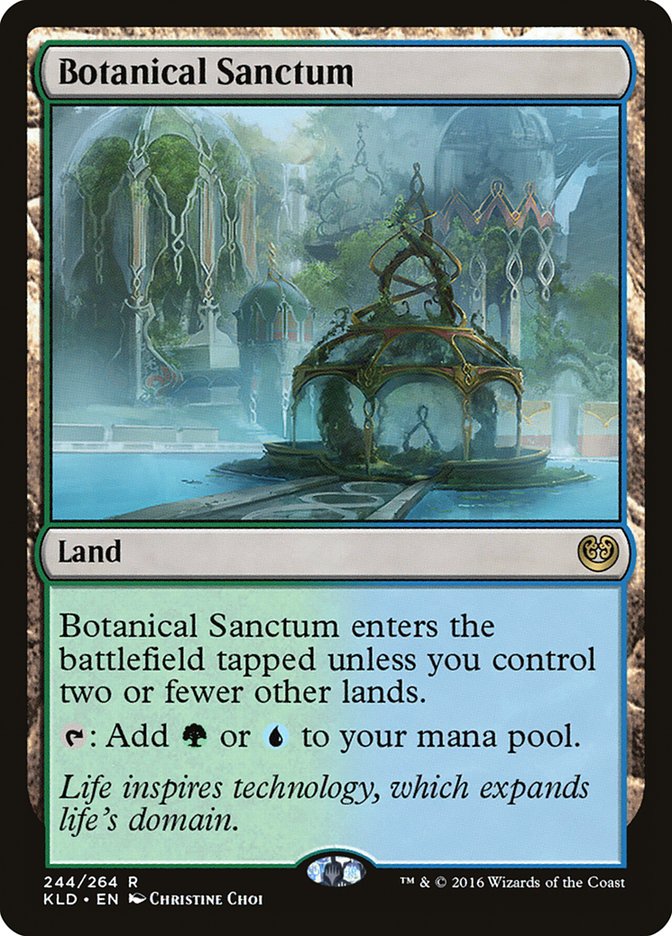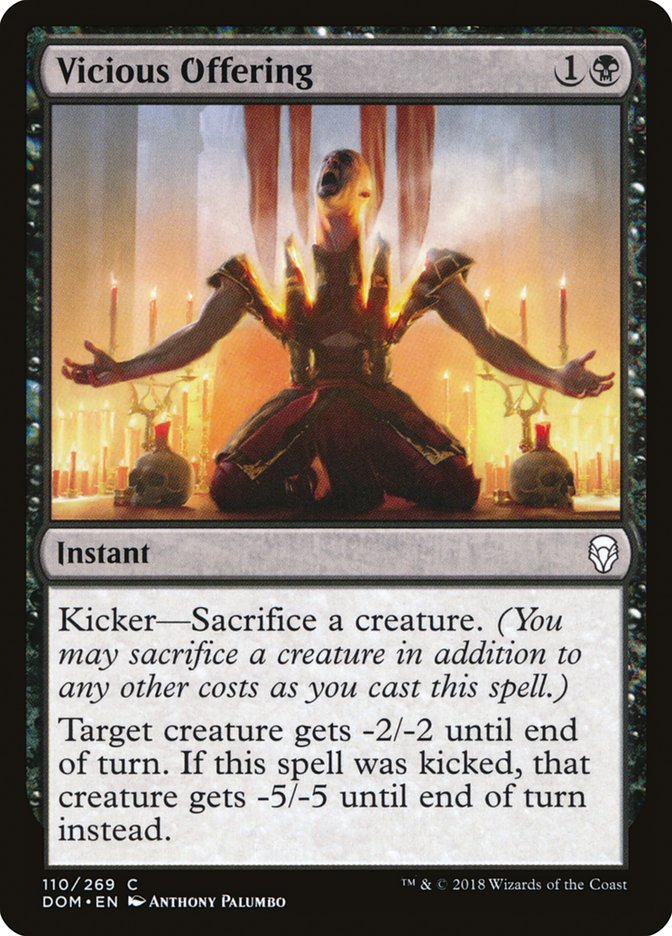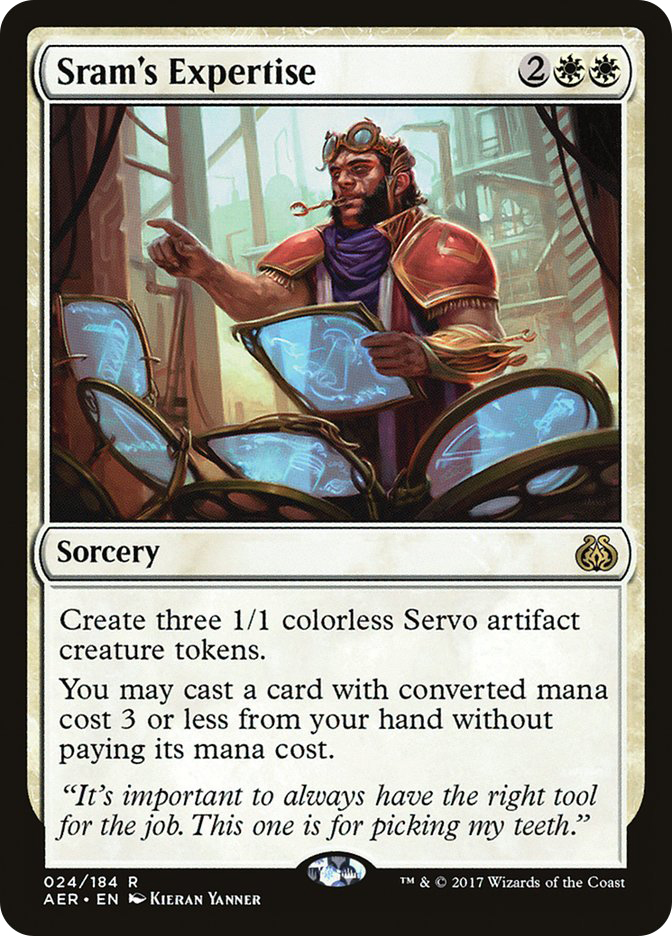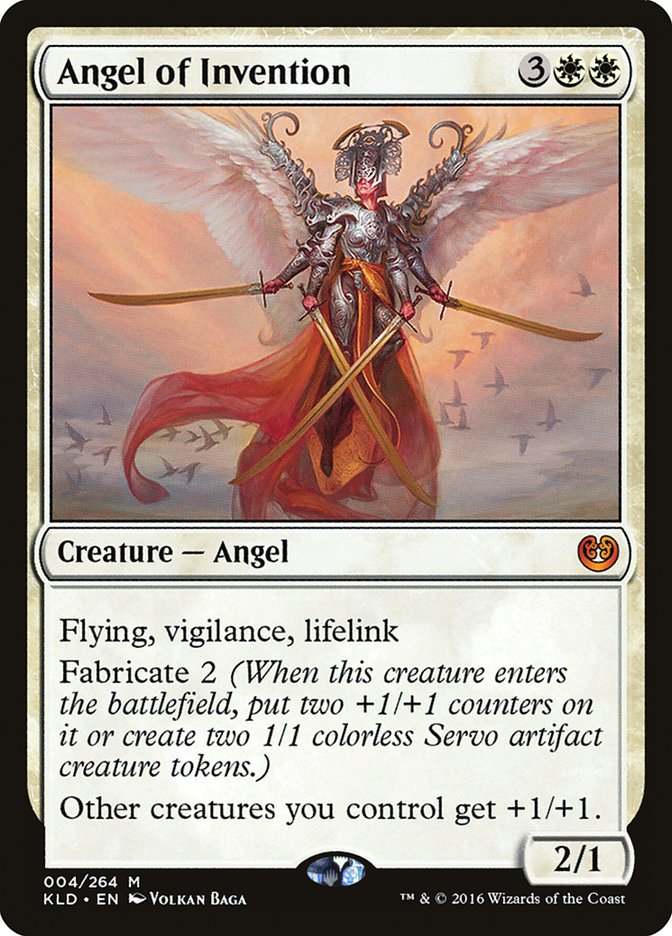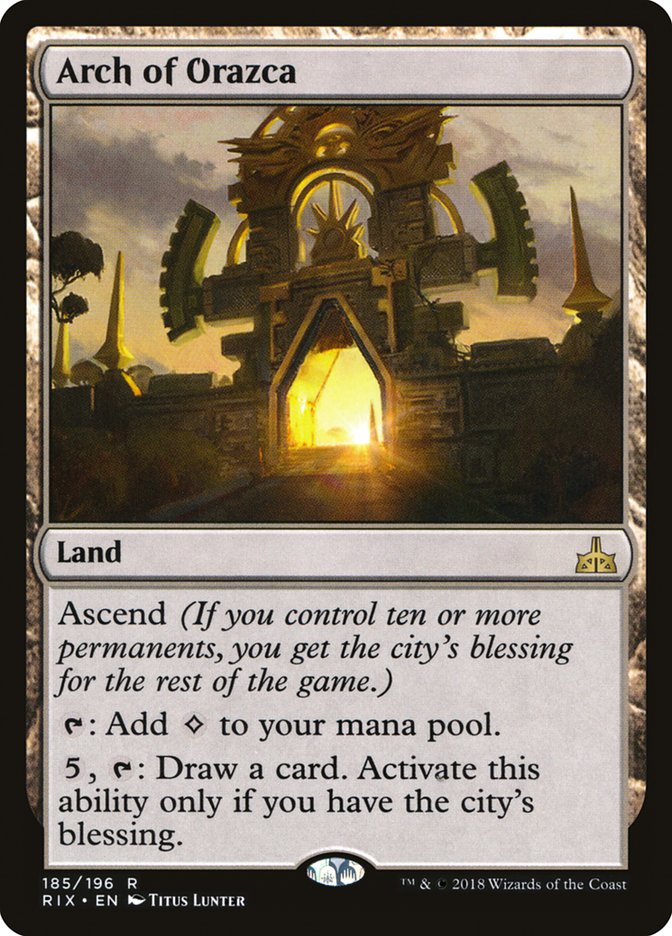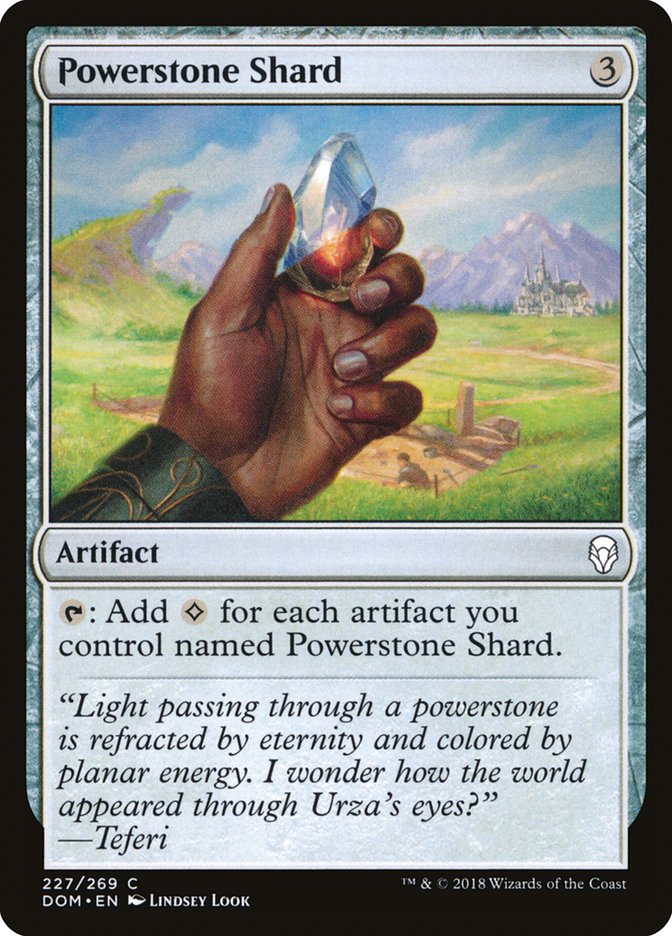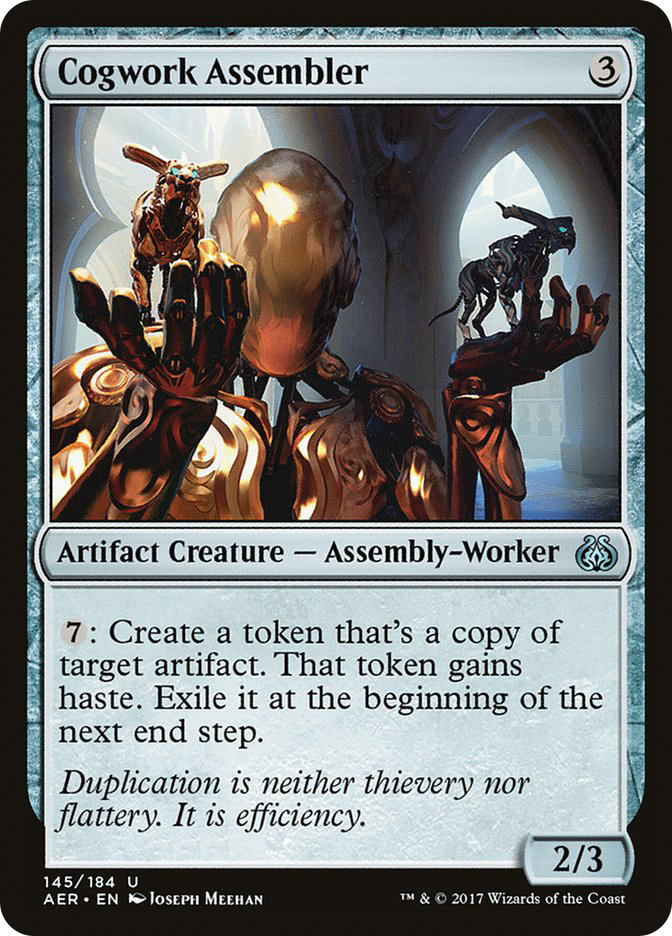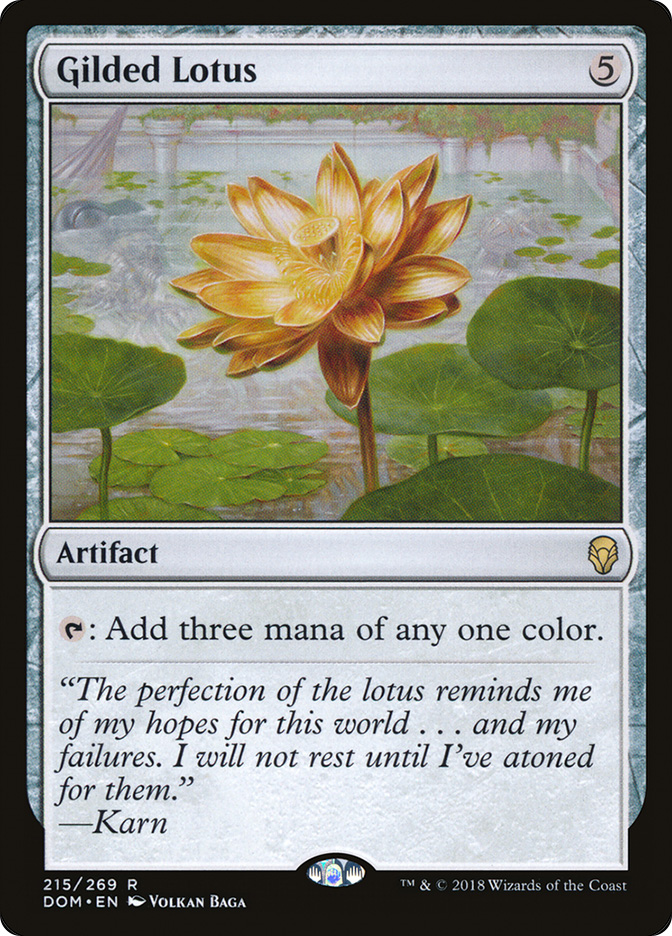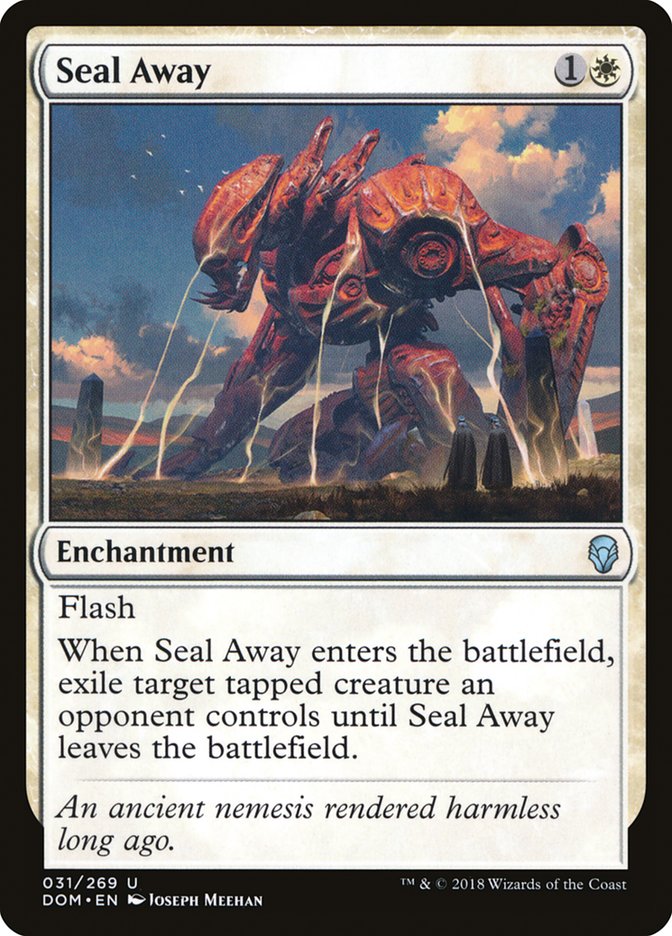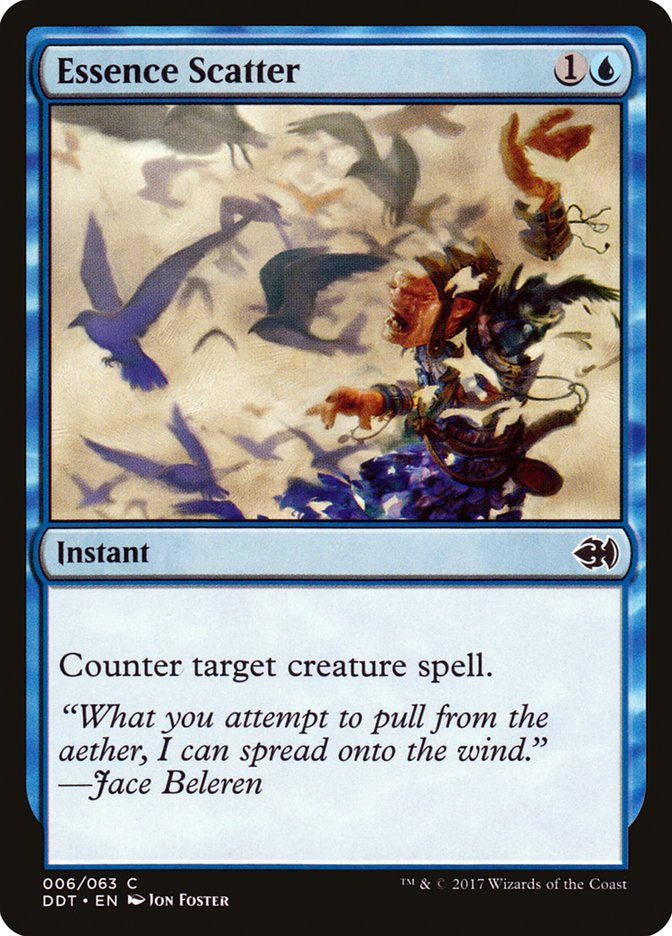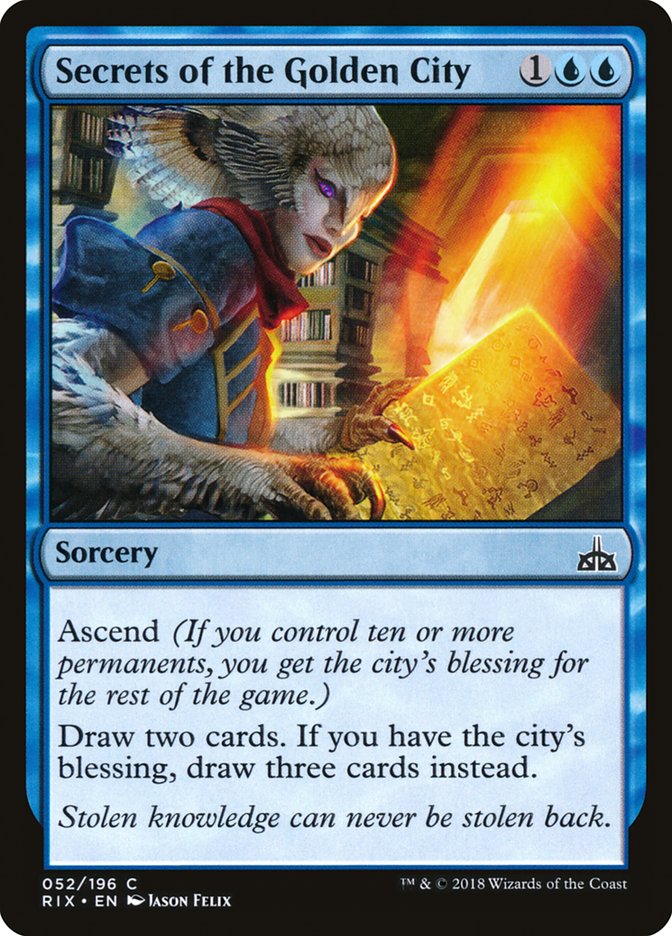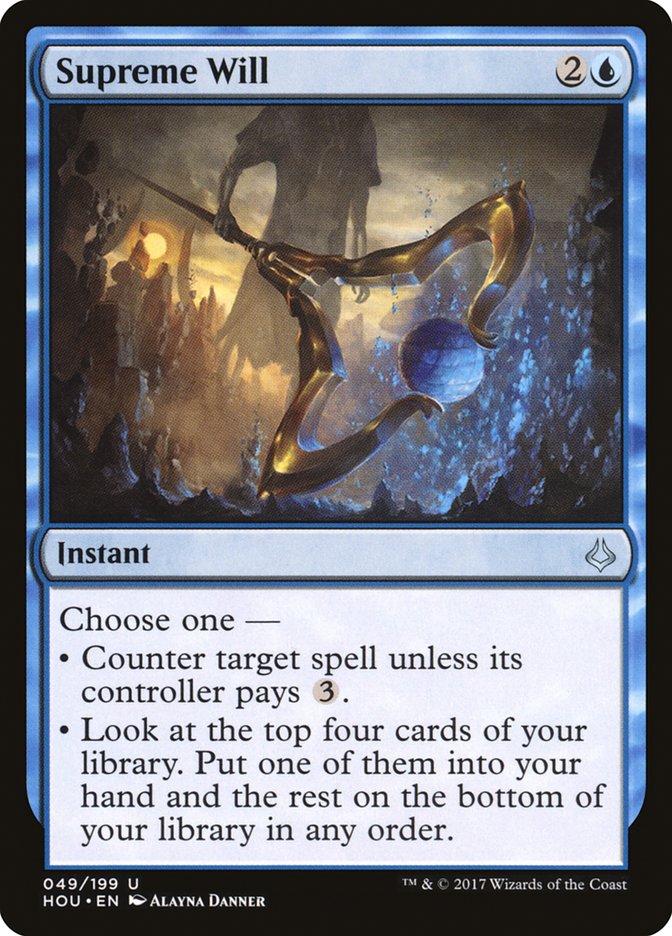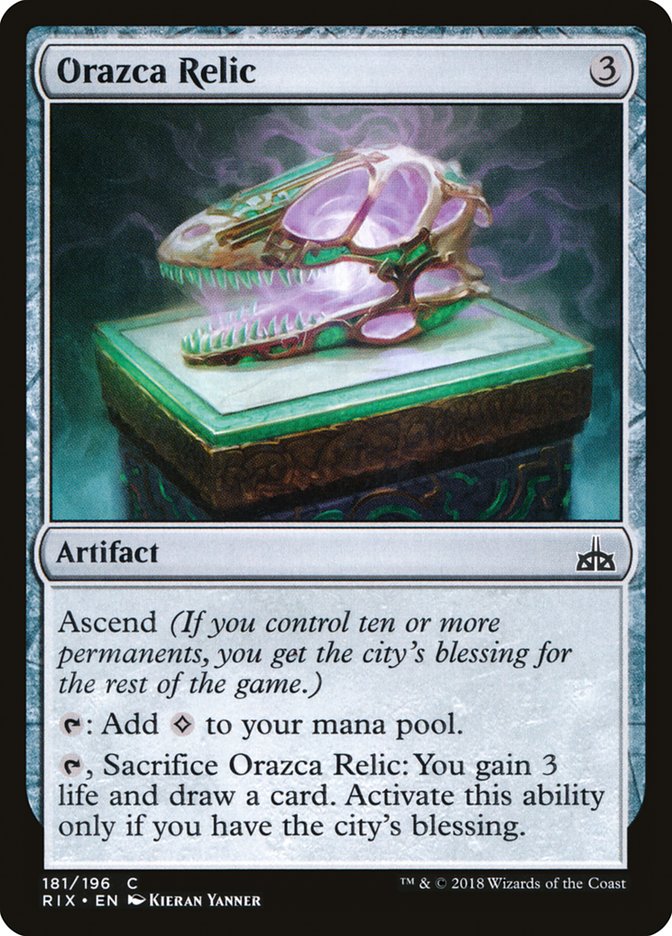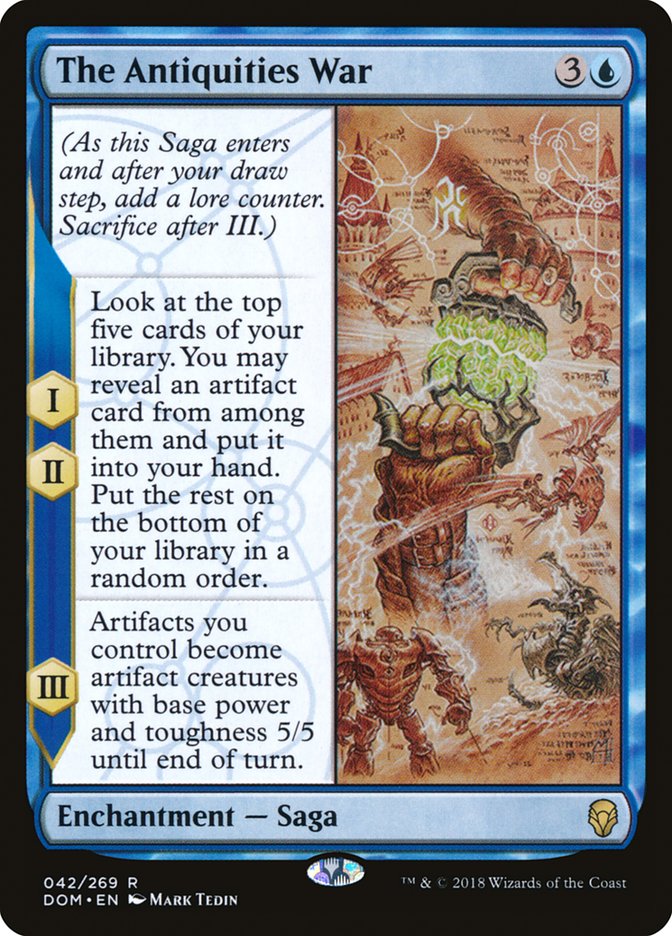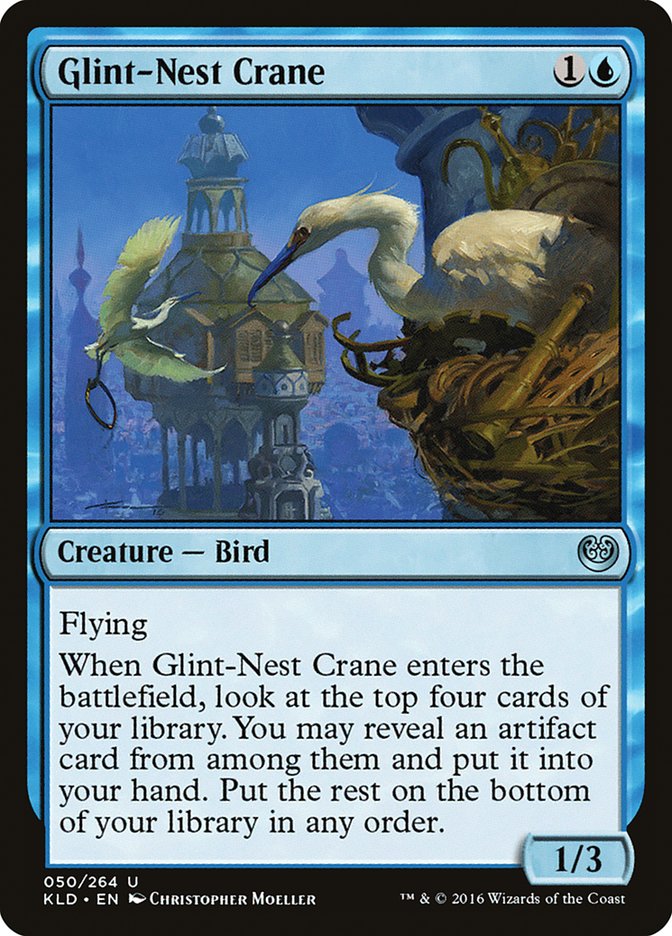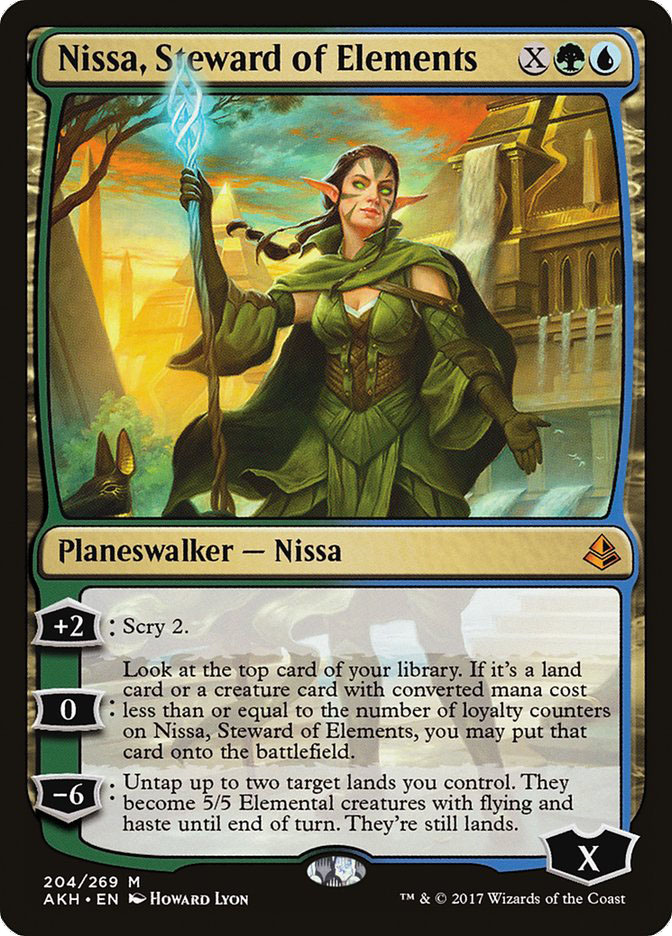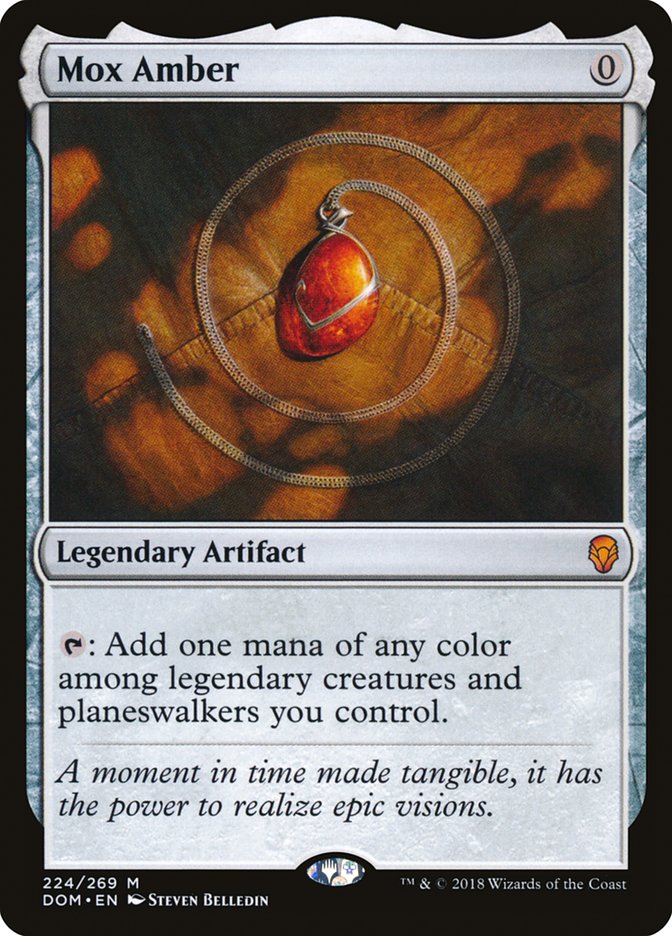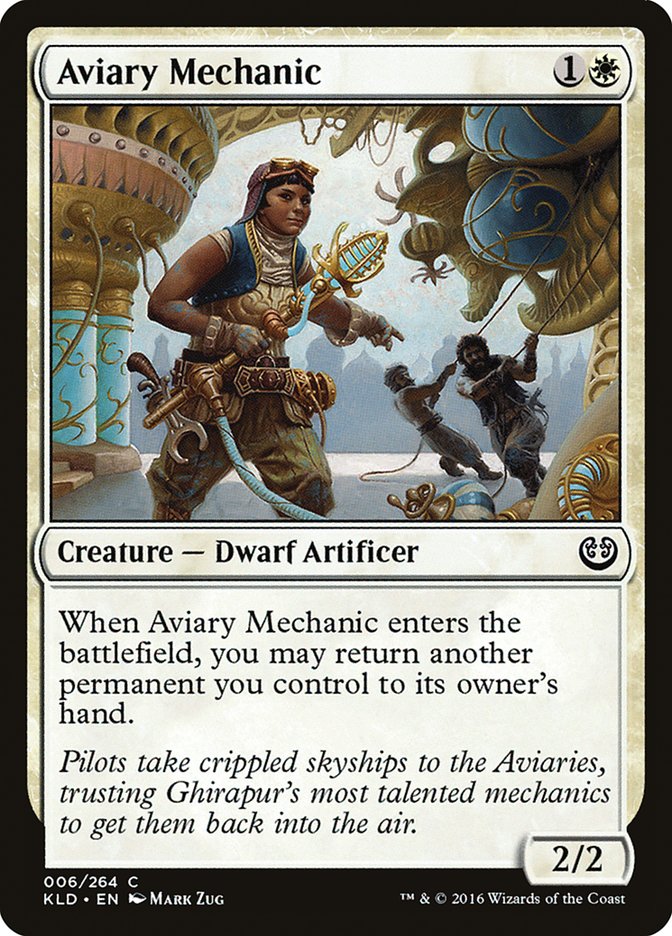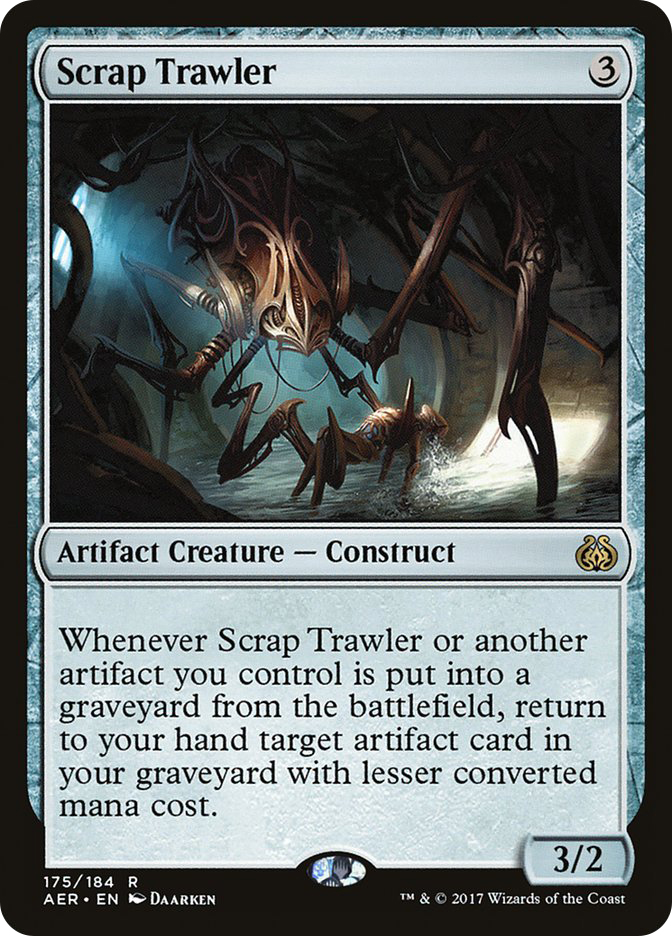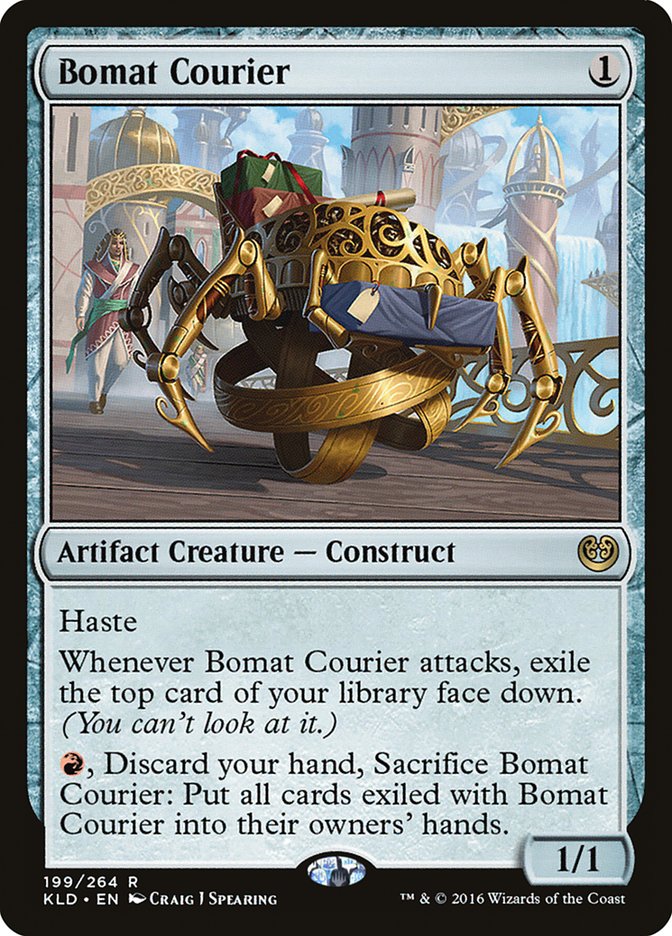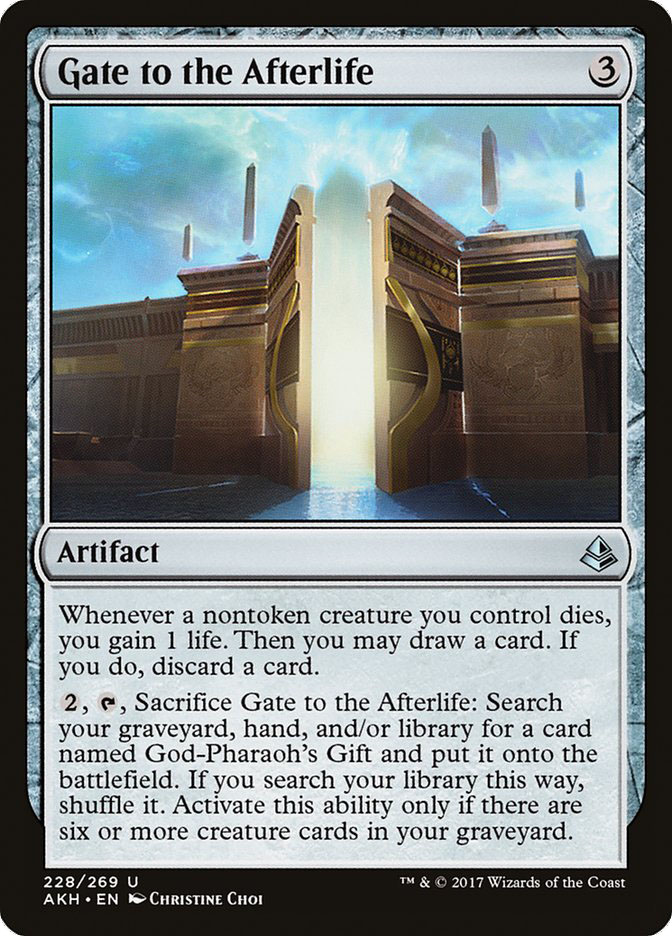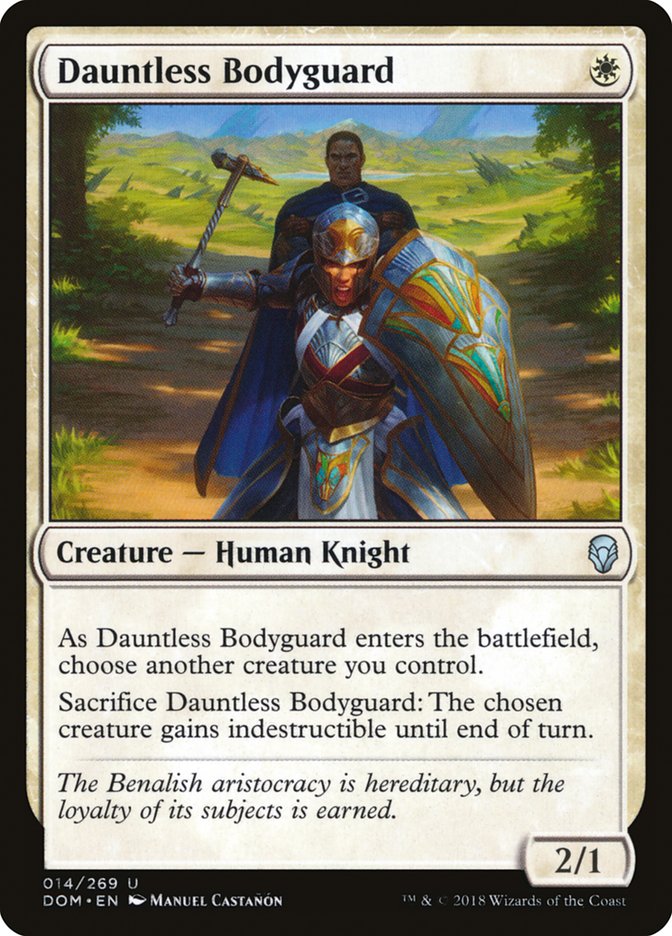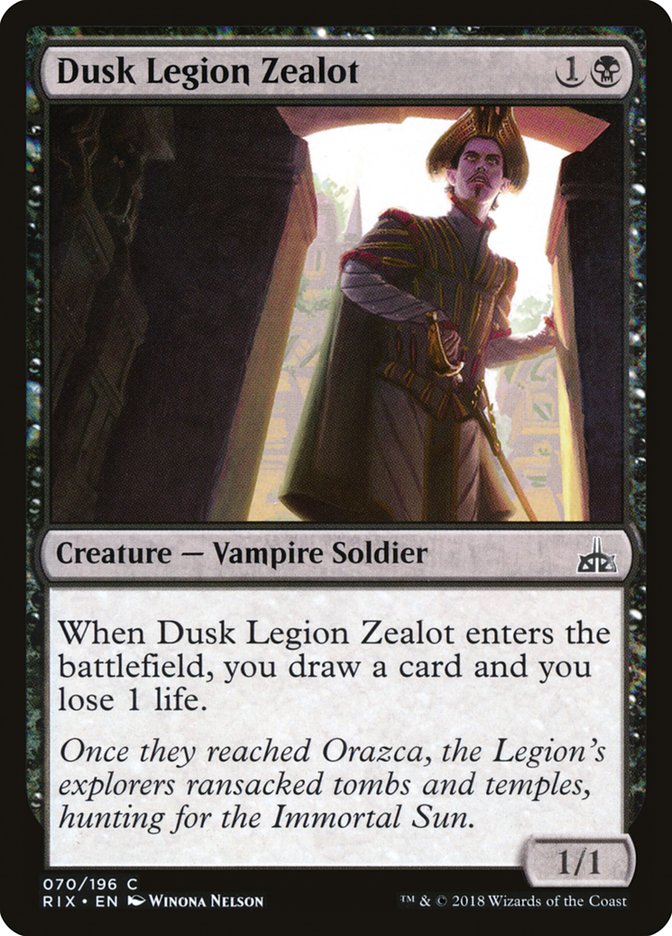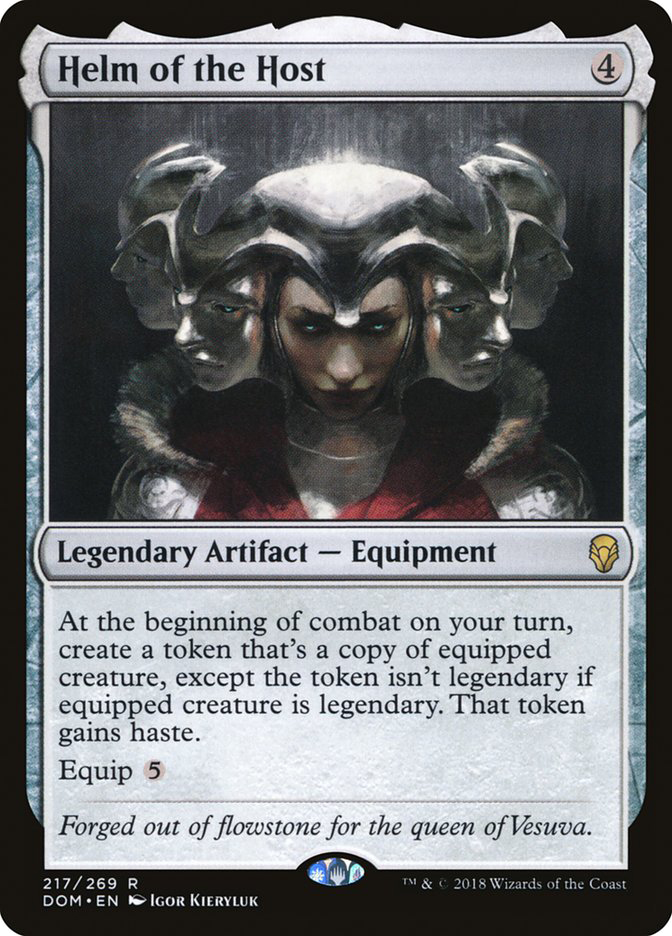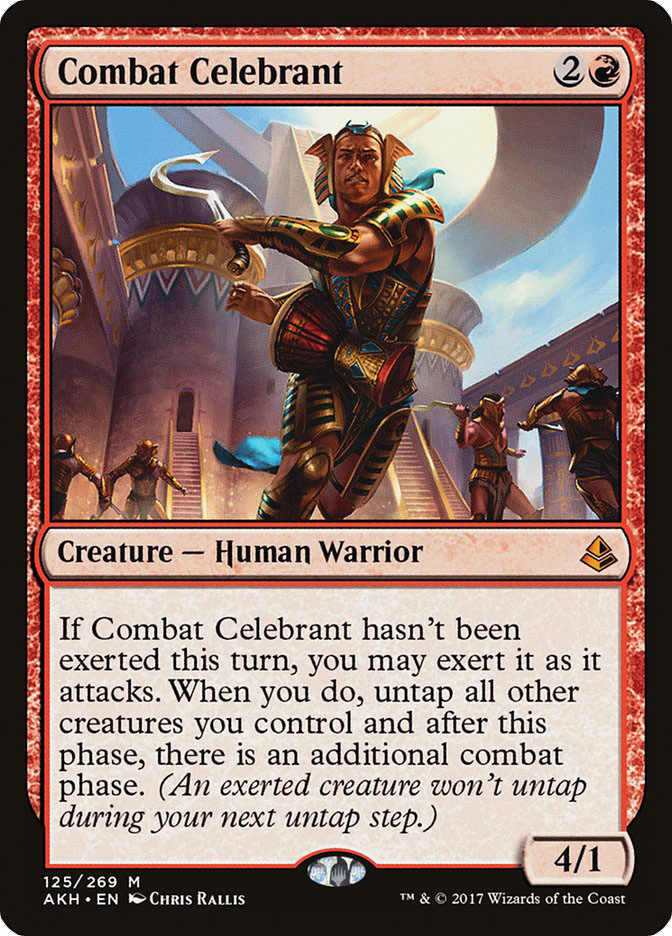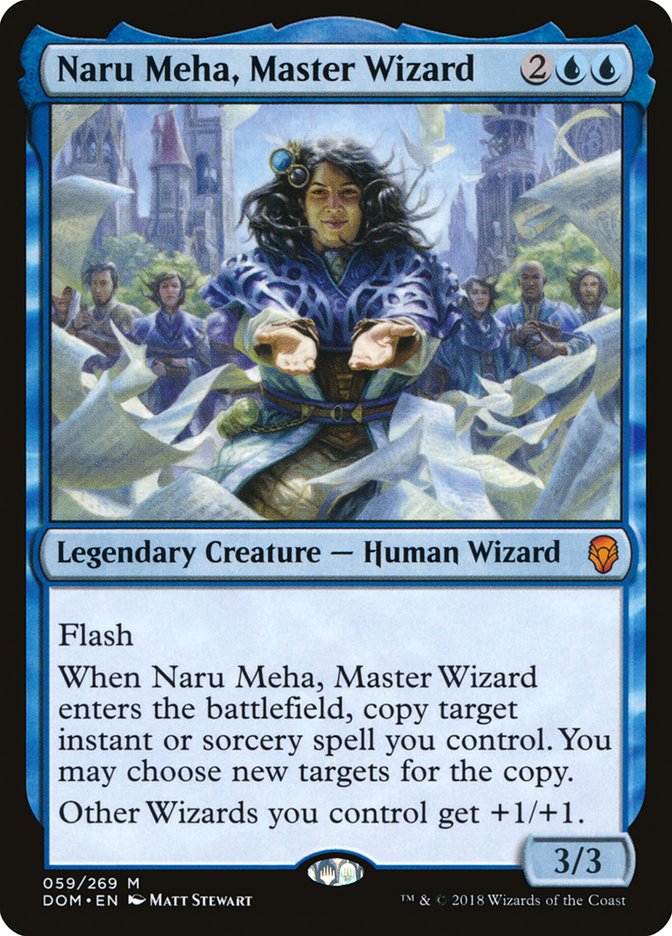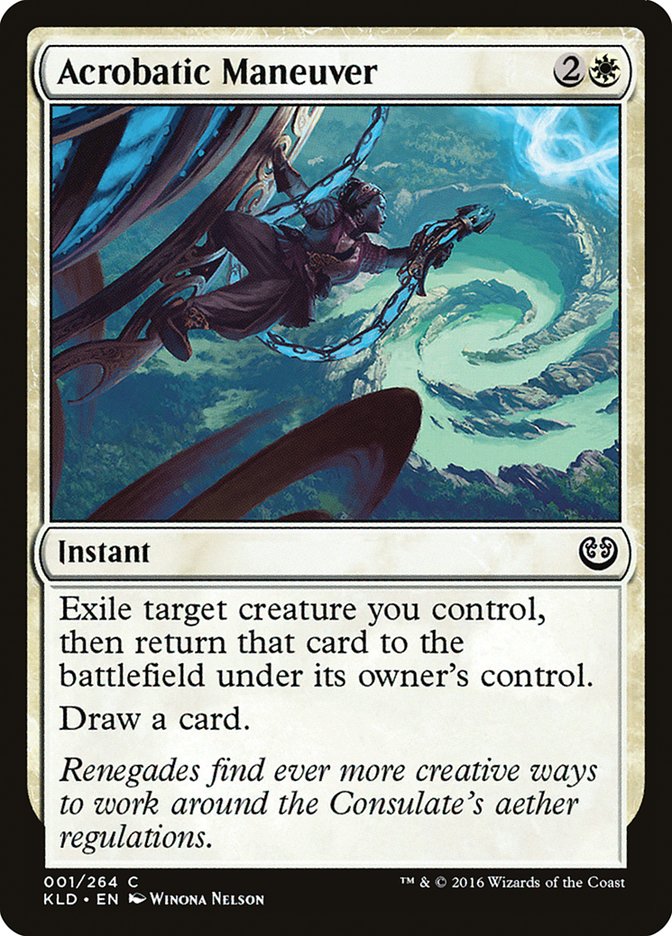The most consistently dangerous effect in all of Magic is mana acceleration.
This dates back to Alpha and dominates Vintage.
A bit under half the Modern banned list is mana acceleration, and a lot of the remaining ban discussion revolves around when the rest of the fast mana will be banned, not if.
Even bigger mana acceleration has its place in dominating more constrained formats like Commander.
Dominaria is full of ways to generate tons of extra mana at relatively low cost. Something really powerful is bound to happen.
Song of Freyalise is just Cryptolith Rite, which was a pretty awesome card. Yes, this is a temporary version, but if you want to keep churning mana, you can just Renegade Rallier it. In Shadows over Innistrad Standard, I played both the B/G Cryptolith Rite Aristocrats-style deck and the later Four-Color Eldrazi Displacer combo version, so I feel like I have a pretty good background on how the card works.
The key question to ask with Cryptolith Rite-style cards is why you are not just attacking with the low-end creatures. Cryptolith Rite worked because Collected Company mirrors made attacking impossible. This Standard format is not that. Currently the good green low drops only stop attacking when they cast some giant thing that kills you immediately. Tapping a 3/2 Merfolk Branchwalker for one mana is kinda dumb.
That said, I also made the statement that your two- and three-drops only exist to support your four- and five-drops, and it doesn’t look like Glorybringer or The Scarab God is getting outclassed, so let’s work with that in mind.
I want my Song of Freyalise deck to look like a normal Magic deck, but with a boost some games where you spam eight or nine mana. The first things that came to mind as great Magic cards that benefit from an overload of mana were Hostage Taker and The Scarab God. One of the downsides of The Scarab God has always been it gets answered at parity by Cast Out unless you have nine mana for the cast plus activation. Hostage Taker is similar.
Creatures (22)
- 4 Llanowar Elves
- 2 Weaponcraft Enthusiast
- 4 Servant of the Conduit
- 4 Glint-Sleeve Siphoner
- 3 The Scarab God
- 2 Champion of Wits
- 3 Hostage Taker
Planeswalkers (1)
Lands (23)
Spells (14)

Things going on here:
I don’t want to overload on the tokens part of my deck and draw hands that are all 1/1 enablers and no real action to push them out. Saproling Migration is the most efficient version of the effect with the highest payoff, so maximizing it over Weaponcraft Enthusiast is easy.
The other element is that you need ways to churn cards to give you something to do with your mana. Cryptolith Rite had Duskwatch Recruiter. Song of Freyalise doesn’t have anything nearly as obvious, so you need more cards doing the work. I’m interested in cards that give me more cards as opposed to something like Walking Ballista because I already have The Scarab God at the top and need some smoothing to piece the combo-ish elements of the deck together.
Glint-Sleeve Siphoner is among the best card drawing engines in the format and a reasonable early creature. Done.
I hate Champion of Wits in the current fair decks, but this deck is prone to flood with so many mana creatures. That means you have extra mana to discard and eternalize it. I still want graveyard-active cards to make the discard-two better, so let’s dig.
Driven // Despair is an extremely powerful card that has just been looking for a home.
Commit // Memory in the usual Vraska’s Contempt slot feels on-point here. Not only does playing a removal spell that costs a single blue over double black make your mana better, but the back side of Memory is going to do some serious work with Song of Freyalise.
While Owen Turtenwald got the jump on discussing post-Dominaria mana last week, it’s still one of my favorite things to look at every new Standard. Llanowar Elves is a big deal, and Sultai is the best spot for it due to having eight green Kaladesh fastlands. Because of those and presumably wanting Aether Hub for even more untapped green sources on Turn 1, you can’t really play that many copies of Woodland Cemetery or Hinterland Harbor. Even if the mana gets better, there are still real decisions to be made between one-drops and untapped lands on Turn 5.
The last card I want to mention is Vicious Offering. Ben Weitz turned me on to this card being playable, and in this deck it just hits all the points I want from early removal. It trades up to The Scarab God at instant speed, it lets me dump creatures for my own The Scarab God, and lets me sacrifice Champion of Wits for Flashback.
I don’t want to go through the whole default W/G build because it doesn’t have the same supporting engine quality as Sultai (Tishana, Voice of Thunder is not that), but I do want to shout out a piece of tech from my W/G Tokens opponent at Grand Prix Seattle, Kyle Peters. He elected to play Arch of Orazca in his deck to churn cards in the late-game, and while it is a little expensive with Song of Freyalise, it seems like a start.
My next list is an artifact deck that came together with input from people I met through playing various green combo decks. Ironic that they would help with this and not the Song of Freyalise deck!
This combo was messaged to me by Brett Sinclair, whom I met chatting about Rally the Ancestors before he made Top 8 of a Grand Prix with it. I identified Powerstone Shard as a potential crazy mana engine a month ago, but my initial instinct was to spend the mana on Paradoxical Outcome and kill with Nissa, Steward of Elements. Brett offered me one better: an arbitrarily large combo with another Trophy Mage target in Cogwork Assembler.
If you have six Powerstone Shards and copy one with Cogwork Assembler, the copy taps for seven mana. This lets you activate Cogwork Assembler again for another Powerstone Shard that taps for eight, and then nine, and so on until you have arbitrarily large amounts of mana. That makes an arbitrarily large number of copies of the Cogwork Assembler itself, and your opponent dies.
Asking for six Powerstone Shards seems like a lot, but let’s walk through a simple scenario. Turn 3, you cast a Powerstone Shard. Turn 4, you cast a Powerstone Shard and then tap it to cast Cogwork Assembler. Turn 5, you pass the turn with two Shards, Assembler, and five lands.
On their end step, you tap five lands and a Shard to copy a Shard. Similar to Kiki-Jiki, Mirror Breaker, your token is sacrificed at the beginning of the next end step, which is yours. You then untap and play a sixth land. You tap four lands and a Shard to copy a Shard and now have two lands and three of four Shards untapped. You tap two Shards and make a fifth Shard, two of which are untapped. Two lands and that fifth Shard make a sixth Shard, the two leftover Shards make the seventh, and that’s it.
Yes, that is a lot of do-nothing and having a 2/3 survive, but it clearly doesn’t take a lot to get there. Two Shards and fourteen other mana sources also let you just go off from Cogwork Assembler in hand. This is a lot of physical stuff, but it isn’t a lot of different things.
Enter Gilded Lotus. The last time Gilded Lotus was in Standard was nothing short of wild. I’ll present the evidence of “The Funnerest Deck in Standard,” which eventually morphed into the Door to Nothingness control deck. These were 100% serious competitive decks that put up real event finishes. These were not jokes. Gilded Lotus is messed up.
The morning after Gilded Lotus was revealed in Dominaria, I received a message from Josh Begian, who had made the shell for the Omniscience deck: “How do we make a new Gilded Lotus deck?”
This is where we ended up:
Creatures (5)
Planeswalkers (3)
Lands (25)
Spells (27)

Some more card-by-card breakdowns:
Teferi, Hero of Dominaria is a messed-up Magic card. It looks like the standard Ob Nixilis Reignited variant we are used to, but it’s way closer to Vraska, Relic Seeker plus Chandra, Torch of Defiance for five mana.
The +1 ability is basically the same as both of Chandra’s +1s at the same time if you build for it. Chandra mana into Harnessed Lighting was one of the scariest sequences of the Temur Energy era. Teferi does that with a card draw.
The -3 ability tucks away opposing planeswalkers. I shouldn’t need to say more.
A lot of this deck is about finding cards that are good curving into a Gilded Lotus and good using the immediate three mana from a just-cast Gilded Lotus. Supreme Will is an obvious good card, but Secrets of the Golden City is just the best way to generate raw cards for three mana. You will hit the city’s blessing eventually, and this deck wants the extra cardboard Secrets offers. The same applies to Orzaca Relic, with a Turn 4 Gilded Lotus being the absolute best thing this deck has to offer.
Commit // Memory shows up again, but playing a different role. Just having a Timetwister effect in this deck adds a ton, as winning can be hard if your Cogwork Assemblers die. You generate enough mana to really be the first person out of the gates post-Memory, which no other deck has done before.
This deck started off with more cards that find artifacts, but it just isn’t dense enough on that card type. The Antiquities War is still exactly my kind of jam for this format, but in this deck, getting four artifacts is a scramble. Karn, Scion of Urza is a better alternate win condition that relies less on artifacts already being on the battlefield that is also castable off Powerstone Shard mana.
If there is one thing I’m eyeing in this list, it’s the lack of other colors. Gilded Lotus made its last Standard appearance tying together WWUUBBRRGG Door to Nothingness activations. Maybe Powerstone Shard’s colorless mana dump isn’t the best pairing, but it feels like just W/U might be starting off a little too close to the vest. Nissa, Steward of Elements is the first card I would add. Nissa on Turn 3 with a plus activation sets up a 0 activation for a Powerstone Shard, and it is yet another big mana endgame. It could also bridge to Hour of Promise, the other nonsense big mana card that doesn’t die to Abrade. Expect to see more iterations of this appearing soon.
As for Teshar, Ancestor’s Apostle…
This might be the most broken card spoiled thus far, and nobody is talking about it. pic.twitter.com/zJXchvPCeB
— Bryan G (@BryanGo) April 5, 2018
The GAM Podcast co-host Bryan Gottlieb is not wrong. Teshar, Ancestor’s Apostle looks really broken and may as well be fast mana. The first card that it reminded me of wasn’t even a Magic card, but a card from the Marvel/DC Comics VS System game called Dr. Light, Master of Holograms. The short version: the card was so good it forced an immediate power level errata on another card, still broke the game to the point it was power level errataed, and then still broke the game and got banned. Magic is a little different from VS System, but Teshar offers a lot of resource payoff for not a lot of effort.
Bryan’s initial reaction is to pair Teshar with Mox Amber, which is the likely best thing you can do. Zero mana for a mana and a three-drop creature is dumb. Aviary Mechanic and Scrap Trawler help establish various loops that can go arbitrarily large with sacrifice outlets, but I haven’t really figured out what else I want in the deck to tie the room together and make it good.
The thing I was trying to figure out at first was why Teshar was better than God-Pharaoh’s Gift. Then I realized you can just have both. The U/R shell showcased at Grand Prix Seattle this weekend had a bunch of historic cards in it and a bunch of cheap things that are absurd to recur. Teshar returning Champion of Wits must be broken in some way, and a white splash off Inspiring Vantage and Aether Hub looks easy. Even if you just Gift back a token Teshar and follow up with a Walking Ballista and return another creature, that approaches the same explosive potential of a Combat Celebrant turn, using cards that are good when cast naturally.
If you insist on being fairer, the two cards I would investigate are Dusk Legion Zealot and Dauntless Bodyguard. Drawing cards and looping ways to protect Teshar are how you’ll establish a real engine that takes over a game, though it’s sad that Dauntless Bodyguard is just indestructible in the “removal has to exile things” format. Hey, at least it stops Magma Spray.
Keep in mind that I’m just talking about the mana today. There are a ton of other broken-looking combos in Dominaria to explore. Lich’s Mastery plus Aetherflux Reservoir, as Patrick Chapin discussed last week, might be my favorite on style points so far. None of them are as obviously silly as Felidar Guardian plus Saheeli Rai, but we are entering some dangerous territory here.
While I did say it seemed like The Scarab God and Glorybringer still looked to be the best raw five-drops around, there’s a chance that Standard won’t revolve around casting five-drops for the first time in a long while.


